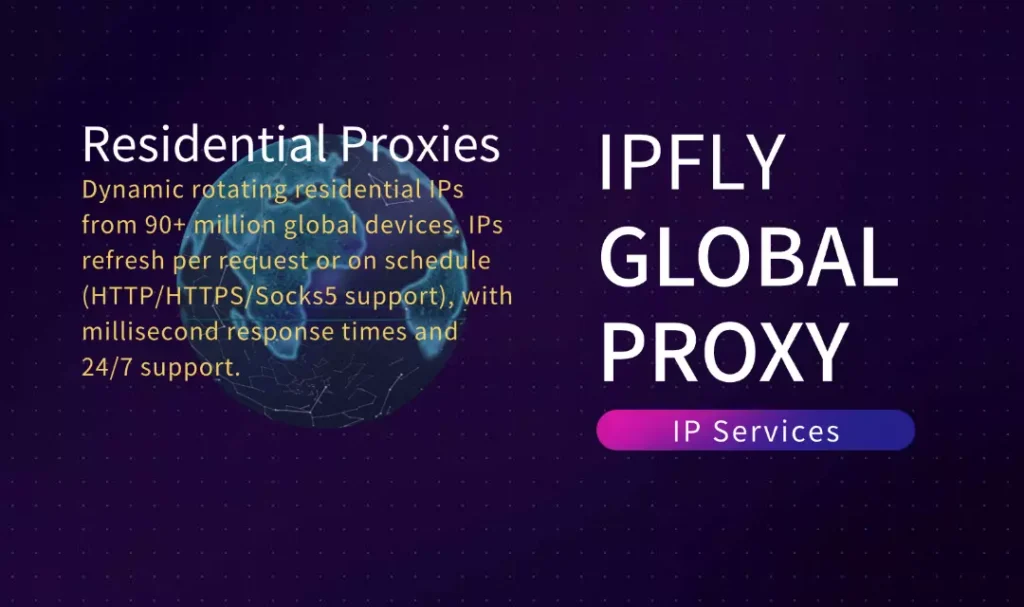In the intricate web of the internet, where data packets dart like fireflies through a nighttime forest, the static residential proxy emerges as a masterful form of digital disguise. Much like how a chameleon maintains a consistent hue to blend seamlessly into its habitat, this proxy provides a fixed, unchanging IP address sourced from genuine residential networks, allowing users to navigate online spaces with enhanced anonymity and reliability. By mimicking the behavior of everyday home internet connections, static residential proxies bridge the gap between security needs and natural online patterns, drawing from principles of network engineering and behavioral simulation. This article delves into the scientific foundations of these proxies, their operational dynamics, and their transformative role in various digital pursuits, using analogies from nature to make the complex accessible.

Imagine the internet as a bustling ocean teeming with fish: websites and platforms act as vigilant predators, using anti-bot algorithms to detect unnatural behaviors. Static residential proxies excel by emulating the subtle movements of native inhabitants—real users on home networks. When you connect through such a proxy, your requests are rerouted via this fixed residential IP, which supports common protocols like HTTP, HTTPS, and SOCKS5 for versatile applications.
From a technical perspective, this involves a multi-layered process
The proxy server intercepts your traffic, substitutes your IP with its static residential one, and forwards the data to the destination. This creates a buffer against detection, as the IP appears genuinely residential, reducing the likelihood of blocks or bans. In evolutionary terms, it’s similar to how certain species develop fixed camouflage patterns that fool predators over extended periods, providing survival advantages in competitive environments. Services like IPFLY enhance this with their static residential proxies, offering permanently active IPs allocated directly by ISPs, ensuring 100% replication of real residential environments for scenarios demanding fixed identities.
Facing lag in cross-border live streams, high latency in overseas online meetings, or unstable game server logins? Low-latency proxies are the fix! Visit IPFLY.net now for dedicated high-speed nodes (average latency <80ms), then join the IPFLY Telegram group—get “live stream low-latency proxy setup tips”, “overseas meeting network optimization plans”, and user-tested “best proxy node choices for different scenarios”. Enjoy smooth cross-border network connections!

Key Advantages: Stability Meets Anonymity in the Digital Realm
The allure of static residential proxies lies in their blend of reliability and stealth, principles borrowed from physics and biology. Stability is paramount: unlike rotating proxies that switch IPs frequently, static ones maintain a consistent identity, ideal for tasks requiring ongoing sessions without interruptions. This is akin to how a steady heartbeat sustains life, providing a reliable rhythm for complex operations.
Anonymity benefits from the residential origin
As these IPs evade the suspicion often cast on datacenter alternatives. High success rates stem from their authenticity, with uptime often reaching 99.9%, enabling millisecond-level responses. In practical terms, this empowers users to reduce costs and boost efficiency, much like how efficient enzymes in biochemistry catalyze reactions without waste.
Real-World Applications: From E-Commerce to Data Exploration
Static residential proxies find utility across diverse fields, demonstrating their versatility in the digital food chain. In cross-border e-commerce, they simulate local user behaviors to test pricing and access region-specific deals, mirroring how migratory birds adapt to new territories. Social media marketers leverage them for account management without triggering risk controls, ensuring campaigns spread like viral phenomena in epidemiology.
For developers and researchers
These proxies facilitate game testing and data collection, bypassing anti-crawling mechanisms as if slipping through a forest undetected. Financial services benefit from their security, preventing bans in sensitive transactions, while advertisers use them to verify ad placements globally. This broad applicability underscores the proxy’s role as an evolutionary tool, adapting to human ingenuity in an ever-shifting online landscape.
Potential Drawbacks and Considerations: The Balance of Nature’s Trade-Offs
No adaptation is perfect, and static residential proxies reflect nature’s inherent balances. Their fixed nature, while stable, can lead to overuse detection if not managed carefully, similar to how a prominent landmark becomes too familiar to evade notice. Costs may be higher due to their premium residential sourcing, prompting users to weigh benefits against expenses.
Security remains key
High-standard encryption prevents data leaks, but users must select providers with rigorous filtering to avoid abused IPs. Ethically, responsible use aligns with compliance, ensuring these tools enhance rather than disrupt digital harmony.
The Future of Proxy Technology: Evolving in a Connected World
As networks grow more intelligent, static residential proxies are poised for advancements, perhaps integrating AI for predictive maintenance or blockchain for verified authenticity. This evolution mirrors genetic adaptations, where traits refine over generations to meet new challenges.
In summary, understanding what a static residential proxy is reveals a fascinating intersection of technology and mimicry, empowering users to traverse the internet with confidence. By harnessing these tools, we not only secure our digital footprints but also appreciate the elegant science that underpins our connected existence.


